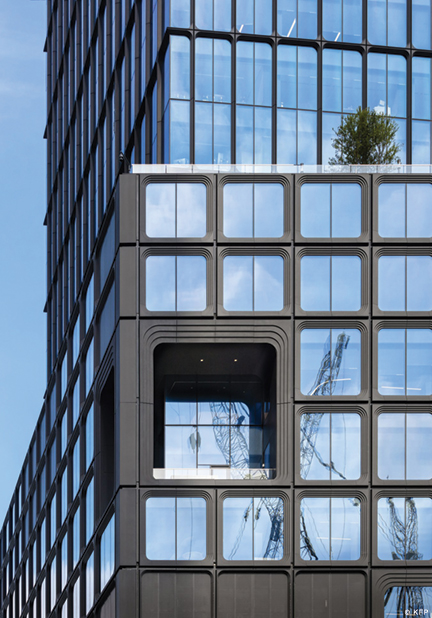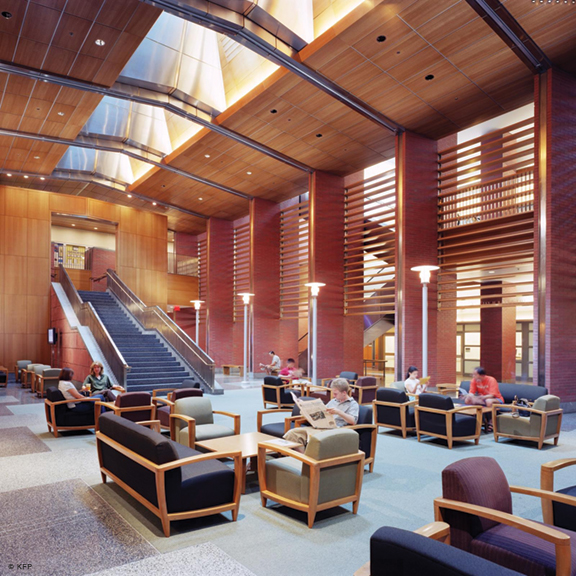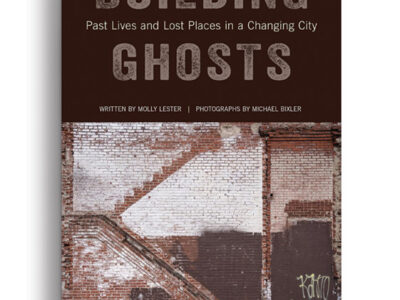
Gene Kohn reflects on the consolations of corporate architecture.
A. Eugene Kohn Ar’53 GAr’57 never wanted to be a starchitect. He didn’t enter the field dreaming of the kind of attention-getting civic projects—art museums, central libraries, cultural centers—favored by folks like Frank Gehry, Daniel Libeskind, and Zaha Hadid. Instead, as he reveals in his new book, The World By Design: The Story of A Global Architecture Firm, Kohn—along with his founding partners, William Pedersen and Sheldon Fox Ar’53 (of the eponymous Kohn Pedersen Fox, now KPF)—“wanted to design commercial projects—such as office towers, apartment buildings, hotels, and retail complexes—because they have the most impact on the public life of cities.”

Office buildings might never be sexy, these three conceded, but “we felt it was wrong to ignore them,” Kohn writes. “We wanted to tackle the challenge and make these buildings work as positive contributors to a city’s fabric and a neighborhood’s character. If we could do that, we could make a significant contribution to the architectural profession and urbanism.”
More than 40 years later, the 88-year-old Kohn still shows up at the firm’s New York offices every day that he’s in town. The practice has grown to 700 employees spread across nine global offices, and chances are that you’ve visited or worked in some of its 300-plus completed projects. They include corporate headquarters for ABC, IBM, and Procter & Gamble, and mixed-use mega-developments like London’s Canary Wharf, Tokyo’s Roppongi Hills, and New York’s Hudson Yards. In Philadelphia you may have seen KPF’s work at One Logan Square, the BNY/Mellon building, and Wharton’s Huntsman Hall—or passed by the prominent Broad Street corner where the firm’s first residential tower in Philadelphia, Arthaus, is now under construction.
Although the greater public may not take much note of such buildings, the architecture world has looked kindly on KPF’s attempts to elevate the workhorses of the built environment. Before the firm had even celebrated its 10th birthday, Pulitzer Prize-winning architecture critic Paul Goldberger commended its “rise to the front rank of American architectural firms” in a nearly 5,000-word profile that appeared in the New York Times Magazine. (A few years later he praised its body of work as possessing an “abstracted classicism, an attempt to pick up the spirit of the great romantic office towers of the 1920s and ‘30s.”) And, as Kohn proudly notes in his book, KPF has won nine AIA (American Institute of Architects) National Awards.
Kohn says he wrote the book to illustrate how the firm’s architecture stems from an approach that welcomes client input and views design as an opportunity to solve problems, not to make grand gestures. “Most articles and books deal with the famous architect or the famous building,” he says. “No one looks closely at the profession. It’s a lot more than some great designer quickly sketching a building. It’s not about an individual, like a painter or a musician. It’s about a team.”
Still, there’s little doubt that Kohn was the firm’s leader from the beginning. As Goldberger observed in his profile: “Relaxed and casual on the surface, intense and driven beneath it, Kohn … speaks as smoothly as a Southern senator. Unlike many architects, he is at ease among businessmen. He … is as happy to discuss the tax implications of a building project as he is its aesthetics. Real-estate developers and corporate executives who might find other architects too flamboyant, or too rigid, think they see in Kohn Pedersen Fox a group that speaks their language.”
That business savvy might explain why Kohn’s book—with its in-depth look at everything from wooing potential clients to managing a decentralized staff—is reaching a larger audience than he anticipated. “I didn’t think anyone would read it beyond other architects and our clients. But a professor at Harvard Business School told me he read it in a day and a half and he thinks it will work great for his students, for people who want to lead teams and run businesses.”
Although most of the book is devoted to the inner workings of KPF, Kohn begins by painting a quick portrait of his early life in Philadelphia, where his father, William, a one-time medical researcher, and mother, Hannah, a fashion retailer and designer, encouraged his intellectual and artistic pursuits. Penn became the “second major influence on me,” he writes. The “excitement at the school,” he continues, “caught me in its grasp … Listening to [Lewis] Mumford was amazing. … [Ian] McHarg was always a scene to watch … [Paul] Rudolph was engaging and always enthusiastic.”
After a stint in the Navy, he returned to Penn to pick up a master’s in architecture and then landed at the office of Vincent Kling, which at the time was the largest architecture practice in town. He rose to senior designer but eventually succumbed to the siren call of New York City, where he reconnected with an old Penn pal, Shelley Fox. The two, along with Bill Pedersen, wound up working at the same firm and, in 1975, when Kohn decided to start his own practice, they were the first he invited to join him.
“Architecture is actually an incredibly collaborative effort,” he writes. “Bill, Shelley and I knew that from day one … None of us wanted to play the hero.”
So after the new firm opened its doors on July 4, 1976 the three quickly fell into the roles they’d keep for the duration of the partnership. (Fox retired in 1996 and passed away in 2006, but Pedersen remains active at the firm.) Kohn became the rainmaker (“I was the most outgoing”), Fox took on managerial duties and, yielding to Pedersen’s superior design skills, the trio agreed that the younger architect should become the firm’s lead designer. “Everything that happened afterward flowed from those key moves,” Kohn writes.
It wasn’t all smooth sailing. In the book’s liveliest chapter, Kohn revisits an attempted coup at KPF’s London office that occurred in the wake of the financial meltdown of 2008. In six rather thrilling pages, angry dialogue crackles, parties stare down one another, and backs are stabbed.
The author admits that the segment has turned out to be “everyone’s favorite.” He felt it necessary to include, he adds, because “it was a crisis and I wanted to show how we resolved it and came out stronger because of it.”
As Kohn approaches 90, he seems wistful about his decision to at last slow down. “I like being around talented people and I like being around young people,” he says. “I enjoy working with clients and seeing how pleased they are when their projects turn out so well.”
—JoAnn Greco




